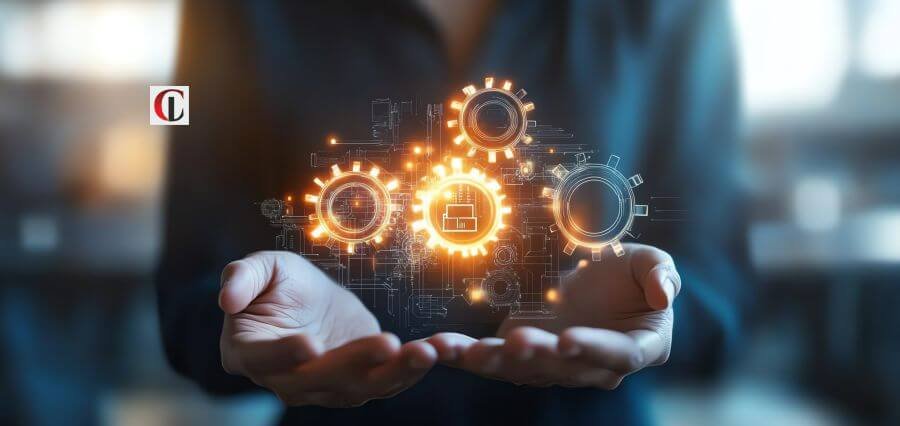This third decade of the 21st century has redefined what agility, resilience and environmental responsibility mean for logistics and supply chain. In the last decade, we heralded an era of technology and looked at big data analytics, blockchain, machine learning, digital twin technology, virtual reality, robotics, IoT, cloud hosting, crypto, automation, digitalization and artificial intelligence promisingly.
These have enabled us to modernize and enhance supply chains. There is no doubt that most of these are here to stay and evolve at an even faster pace. It might also create a seamless integration or coexistence of humans, machines and artificial intelligence. This will improve productivity and profitability and enhance the human experience of not undertaking repetitive and predictive tasks. Artificial intelligence will come close to and even surpass human capability with some types of decision making.
But before we think too far out into the future, the present reality stares us in the face.
The events of the recent years – a pandemic, a war in Ukraine, natural disasters of unprecedented scale, such as bushfires, floods, volcanic eruptions, and rising temperatures are expected to increase in intensity and frequency. This has made humans vulnerable to uncertainty and increased stress from living in a state of constant change or crisis management as a ‘new normal’.
As human beings, we respond to sudden change with a ‘fight or flight’ response. The most important skill I see leaders will develop is ‘Change Leadership’. They will lead their teams through unchartered waters and trust them through the journey. They will help others be positive about challenges, uncertainty, and change. Leveraging strengths of their teams, peers, customers, suppliers, and regulators will be the secret sauce to success. Leaders will be able to better support their teams and recognize early signs of stress or fatigue in both themselves and their teams to avoid the proverbial ‘burnout’.
New generation leaders will be able to articulate their vision of the future; mobilize resources and execute that vision in a sustainable and scalable way. They develop a communications plan early on but continue to adapt the plan to cater to unexpected deviations. These are also leaders, who can create a culture of embracing change and apply considered and targeted strategies to anticipate, seek and overcome detractor concerns. Leaders must be able to understand the emotional cycle of change and navigate the different phases with empathy, but never lose sight of their vision. They must be able to also keep an open mind and listen with an intention to be influenced. They learn, teach, coach and improvise. They remain open to feedback and competent to also provide timely and useful feedback. I see more and more people ‘learning new’ skills as part of their lifelong process. Personally, I have invested more time in my own personal development and growth as a leader in the last three years than I had in the previous decade.
The future of work is here and perhaps here to stay. It has positive benefits for productivity, work life balance and the dreaded suburban commute. The one area that it adversely impacts is building relationships with each other. Building relationships allows employees to know and leverage each other’s strengths and ideas. We are homo sapiens. We learn from each other. “Monkey see Monkey do” is a dated and cringe worthy saying, yet it does tell us that our learning styles are similar to those of chimpanzees which learn from demonstrations. Hence, leaders that are role models boosts learning and helps employees to focus on clear priorities.
As Gen Z and Millennials reach decision making roles, they will probably craft their leadership style. Will they revert to the style of the veterans whom they never met? When I hear them speak, they exhibit the rare combination of intelligence and wisdom. Wisdom as we know improves with experience. They appear to have gained a heightened level of collective consciousness, responsibility and maturity previously unseen.
It is important for supply chains to be agile and adaptable to respond and react quickly to changes. The recent floods and cyclone in New Zealand show why supply chains must be agile to be able to respond in real-time. Even war rooms are now a thing of the past and WhatsApp became the means of communicating a plan involving rerouting of a wide body aircraft’s flight route. This usually requires co-ordination between at least 16 different touch points to ensure customer impact is minimized. Every second counts.
Governance of ESG claims will increase. In 2021, the European Union found that 42% of green statements made by organizations were deceptive or exaggerated. More consumers will demand independent certification of these claims to prevent ‘Greenwashing’. There will also be a renewed focus on modern day slavery, child labor, human rights violations, labor laws, privacy laws and the whole other plethora of compliance requirements. The cost of compliance, governance and environmentally sustainable choices will force products to be more expensive thereby potentially reducing this mass consumerism.
We expect to see corporations lead real CO2 emission reductions. Corporate CEO’s have little to lose when they set bold and audacious environment goals. They will drive the shift from fossil based to green and renewable energy.
The deterioration of law and order as well as increase in criminal activity, cyberattacks, ransomware, data leaks and breaches, trade sanctions, and focus on Internet Protocol, and Intellectual Property rights will rise and take center stage. Supply chain leaders need to be able to protect against and be one step ahead of these.
Human beings have an uncanny ability to adapt, as we have done so for generations like how we found a way out of the industrialization mess some 200 years. What will supply chains of the future look like? Perhaps more expensive but more environmentally sustainable.




